Falls Prevention Education
An extension of our group programming includes a 6 week educational program which will discuss various topics regarding health, wellness, and how to reduce the risk factors for falls. The program encourages participation in 3 days of specialized SMART™ group exercise with the educational sessions occurring afterwards twice a week for the duration of the 6 weeks. A Kinesiologist will attend SMART™ classes to provide additional falls prevention group and 1-1 coaching & modification and deliver educational sessions. Participants and able to sign themselves up for this program and are always encouraged to do so.
The topics that are discussed during this program include:
The Legend of a Fall & Chronic Illness
Muscle & Bone Health
Blood Pressure/Hypotension
Vision & Hearing Changes
Those Darn Feet
Mental Health & Sleep Disturbance
Medication Use
Home & Environment Safety
Nutrition
Mobility Aids & Assistive Devices
Building Balance at Home
How to get up from a Fall
The topics that are discussed during this program include:
The Legend of a Fall & Chronic Illness
Muscle & Bone Health
Blood Pressure/Hypotension
Vision & Hearing Changes
Those Darn Feet
Mental Health & Sleep Disturbance
Medication Use
Home & Environment Safety
Nutrition
Mobility Aids & Assistive Devices
Building Balance at Home
How to get up from a Fall
Scroll down to the bottom to watch our registered professionals perform these talks.
Center and North Wellington Residents!
We are airing the Falls Prevention Series on Wightman Television channel 6 every Monday, Wednesday, & Friday
@ 9:00 am
Listen in for great tips about your health and wellness.
@ 9:00 am
Listen in for great tips about your health and wellness.
The Legend of the Fall

Did you know that 1 in 3 people over 65 are falling each year?
Falls are now the leading cause of death for those over 75 and responsible for 40% of long term care admission.
We cannot stop aging but let's act together and change HOW we age - keeping our independence and vitality until our end.
Falls are now the leading cause of death for those over 75 and responsible for 40% of long term care admission.
We cannot stop aging but let's act together and change HOW we age - keeping our independence and vitality until our end.
Strong Muscles & Solid Bones

We are losing 5-10% of our muscle mass each decade after 40. With loss of muscle comes declines in strength, endurance and balance during our daily activities. Put this in combination with decreases in bone densities puts us at a great risk for injury, fractures and falls.
Keep it in Check: the Ups and Downs of Blood Pressure

Blood pressure is a good indicator of our heart health.
Did you know that 1 in 3 Canadians have high blood pressure? Having a blood pressure of more than 140/90 mmHg is the number one risk indicator of heart attack and stroke.
On the other hand, if our blood pressure goes too low (90/60mmHg), we are at a greater risk for falls. Make sure you take your time and stand up slow and controlled to avoid postural hypotension.
Did you know that 1 in 3 Canadians have high blood pressure? Having a blood pressure of more than 140/90 mmHg is the number one risk indicator of heart attack and stroke.
On the other hand, if our blood pressure goes too low (90/60mmHg), we are at a greater risk for falls. Make sure you take your time and stand up slow and controlled to avoid postural hypotension.
It just keeps changing: vision and hearing

As we age the lenses that are inside our eyes thicken which makes it difficult to focus on an object. This is a part of aging and tends to start after age 40.
Visit an Optometrist (yearly!) to identify and correct any concerns with your vision.
Naturally, our hearing declines as we age as well. Hearing loss frequently goes unnoticed as it happens gradually. Research shows that people with mild hearing loss are 3X more likely to fall. Hearing loss can make us unaware of our environment, which can lead to a fall.
Good news! There are many devices available to assist with hearing.
Visit an Optometrist (yearly!) to identify and correct any concerns with your vision.
Naturally, our hearing declines as we age as well. Hearing loss frequently goes unnoticed as it happens gradually. Research shows that people with mild hearing loss are 3X more likely to fall. Hearing loss can make us unaware of our environment, which can lead to a fall.
Good news! There are many devices available to assist with hearing.
Those Darn Feet! Peripheral Neuropathy and Proper Footwear
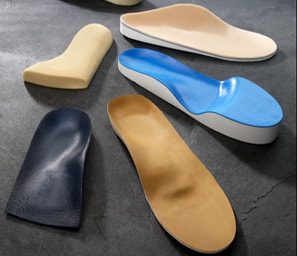
Peripheral Neuropathy, a result of nerve damage, often causes weakness, numbness and pain, usually in our hands and feet. It can result from a number of problems such as traumatic injuries, infections, metabolic problems and exposure to toxins. One of the most common causes is diabetes. This decreased sensation in the feet can lead to postural instability and poor walking mechanics. Remember! Feet are for life, you cannot trade them in for new ones, so it is important to take good care of your feet throughout your life!
Wear properly supported footwear!
Wear shoes at all time to protect your feet!
Always treat the root cause of the problem!
Wear properly supported footwear!
Wear shoes at all time to protect your feet!
Always treat the root cause of the problem!
Mental Health & Sleep Disturbance

The status of our mental health can influence our risk of having a fall. Mental health can include anxiety, depression, substance abuse (medication or alcohol), cognitive impairments (dementia) and medication used to treat mental health concerns. Mental health concerns often result in isolation and inactivity, which are both risk factors for a fall. Physical activity helps us feel good, gets us out of our sluggish routines and helps us regain our social networks.
Sleep is a basic necessity of life at all ages. When we are continuously deprived of sleep, other activities in our day suffer. Interestingly enough, lack of sleep was the most frequently self reported risk factor for falling Physical activity performed in the morning or early afternoon can help you sleep better at night!
Sleep is a basic necessity of life at all ages. When we are continuously deprived of sleep, other activities in our day suffer. Interestingly enough, lack of sleep was the most frequently self reported risk factor for falling Physical activity performed in the morning or early afternoon can help you sleep better at night!
Medication Use: Don't Just Pop a Pill
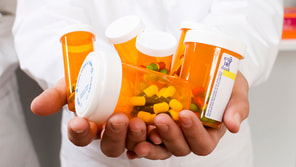
They say that knowledge is the best medicine, so how much do you really know about your medicine? It is important for us to understand what we are taking, why we are taking it, and what side-effects might be associated with the medication. Did you know that taking over 4 medications puts us at risk for having a fall? It is not always possible, but reducing the amount of medication that we are taking can improve our risk of falling.
Ensure that you always know and understand the instructions and how to take your medication. Call your pharmacist about what to do if you miss a dose. Be aware of what you need to avoid, such as other over the counter drugs or certain foods.
Ensure that you always know and understand the instructions and how to take your medication. Call your pharmacist about what to do if you miss a dose. Be aware of what you need to avoid, such as other over the counter drugs or certain foods.
Mobility Aids & Assistive Devices
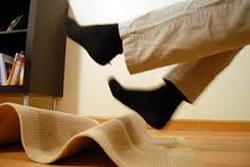
If we have difficulties walking on our own or maintaining balance, then we can use an assistive device, such as a walker or a cane. When these aids are used incorrectly , we run the risk of having a fall or becoming injured. The good news is if we change the way we use these devices we can improve our walking and balance and reduce our risk for falls. Make sure that your walker or cane is set up at the right height and width for you. Ensure that you always stand tall and never lean or slouch on the walker or cane. There are also assistive devices that can be installed in our homes to make transfers and getting around much easier. You can talk to an occupational therapist about setting these up.
Home and Environment Safety

We may not realize it but there are many risk factors for falls in our homes. Approximately 50% of all falls that require hospitalization occur in the home. We need to carefully evaluate our home and environment so that we can reduce any potential risk factors for falls. Start today by identifying unsafe areas in your home. Think about installing hand rails and grab bars in high risk areas. Ensure that the outside of your residence is safe as well. Maybe think about getting a medical alert system in your home.
Nutrition and Incontinence
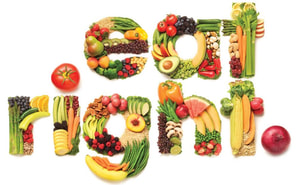
Proper nutrition is important across all ages. Eating a balanced diet and drinking plenty of water is very important for maintaining a healthy lifestyle. Approximately 30% of older adults living in their home suffer from malnutrition. At least 75% of seniors are also dehydrated. Dehydration is an excessive loss of water in the body, which leads to disruptions in metabolic and bodily processes. Calcium and vitamin D are two very important nutrients for promoting and maintaining muscle strength and bone density. All Canadian should be taking a vitamin D pill through the months of October to April.
Incontinence, what can we do about it? Don't wait until the last minute, consider using disposable adult underwear or pads, talk to your doctor about exercises and this to help with the urgency.
Incontinence, what can we do about it? Don't wait until the last minute, consider using disposable adult underwear or pads, talk to your doctor about exercises and this to help with the urgency.
Building Balance at Home
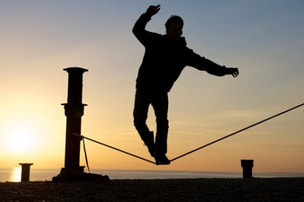
We get visual cues from our eyes that give us all kinds of information about our environment. The inner ear also contains a fluid-filled semicircular canal which gives us the important information on the position of our head and its movement in space in relation to gravity. Pressure systems from special receptors on the bottoms of our feet can give us information about the location of our center of gravity as we shift our weight while standing, walking, or reaching.You can complete a variety of exercises within your own home to gain balance safely. Safety does comes first so if you are going to exercises at home consider inviting someone to do them with you. Always talk to a doctor before starting any new exercises, they may have some modified versions to give you if you have old injuries.
The Benefits of Exercise and How to Get Up from a Fall
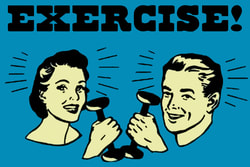
There are many benefits from regular exercise. IT has shown to reduce the risk of heart disease, cancer, high blood pressure, diabetes, and other diseases. It can improved appearance and also delay the aging process too! Exercise can help to prevent falls or lessen severity of an injury from a fall should it happen. Exercise can help stamina, strengthens and tones muscles, enhances flexibility, and improves mental and emotional health.

